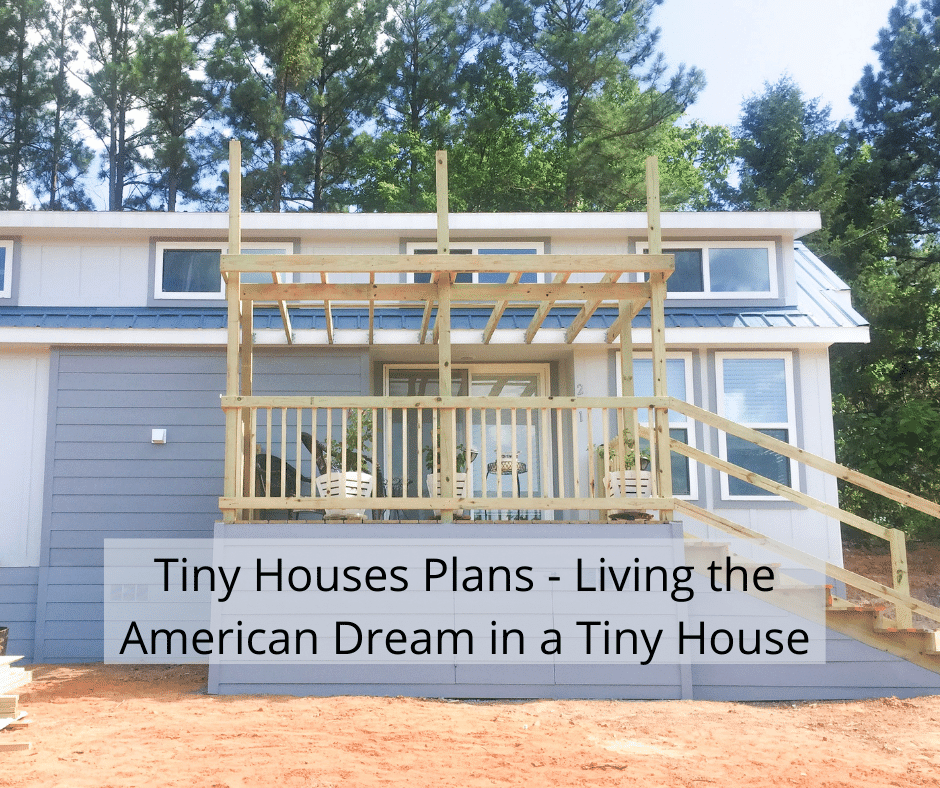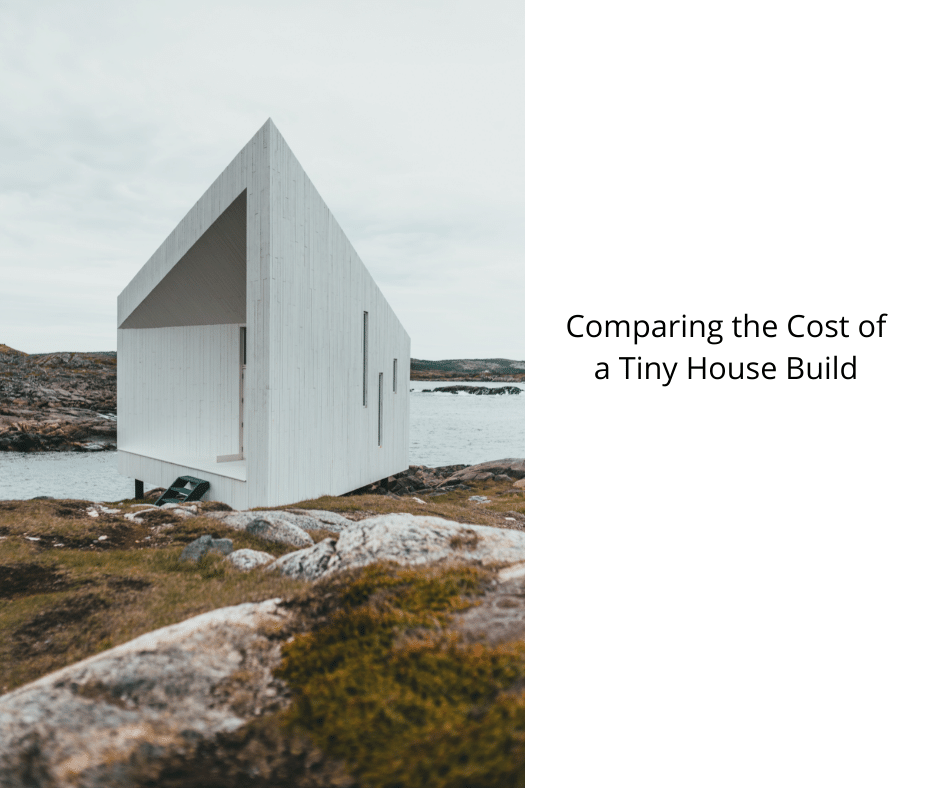Before starting the construction of your tiny house on a basement or crawl space, it is crucial to verify the legality of the project. You have the option of placing your tiny home on an existing concrete slab foundation or another foundation that was originally built for a different purpose. If a concrete slab is not available, purchasing land suitable for your tiny house construction may be an alternative. However, this route comes with risks as the landowner could decide to sell the property at any time, leaving you with a tiny house that may not have legal approval.
Legality of Building a Tiny House on A Foundation
If you’ve been dreaming of creating a tiny house, it’s time to start thinking about whether it’s legal to build on your basement. The legality of building a tiny house on a basement depends on several factors. In some places, such as New York, building codes for tiny houses are more restrictive than those for standard homes. You’ll need to know what the rules are for the neighborhood where you live and what kind of permits you’ll need. In addition, you’ll want to check zoning requirements to see if you can build on that property.
You can build a tiny house on a foundation, but that may cost more. If you’re on a budget, you can purchase a piece of land that has a foundation. You can also tear down any rundown structures on the land so that you’ll have a clean, level place to build your tiny house on. This option might be ideal for you if you’re a DIYer.
Tiny houses are often considered accessory dwelling units, so they can be legal in most places. However, they don’t meet all requirements for single-family residences. As a result, it’s important to understand your city’s zoning laws to ensure you can build on your basement. For example, if you live in a neighborhood where tiny houses are allowed, you can build a tiny home on your employer’s land.
Lastly, you need to consider your city’s zoning regulations and building codes. In the state of California, for example, building codes and zoning regulations can limit the size of a tiny house. Unlike other structures, tiny homes must meet the requirements of building codes and zoning codes. Zoning regulations prevent structures that block views and disturb neighbors. If you’re living in an urban area, you can also check out the requirements for building a tiny house in a subdivision.
Although legal in many areas, the process can be complicated and costly if you’re not familiar with local laws. Make sure to ask about the specific laws that pertain to your area and choose a builder who is familiar with your local building codes. Obtaining written confirmation is crucial, and it’s best to do your own research. This book contains over 160 custom diagrams that will help you understand the intricacies of tiny house construction.
Creating a tiny house on a basement is easier than building a traditional home on a trailer. You can build a concrete slab foundation by creating a wooden frame called a form and pouring concrete over it. You can reinforce the slab with rebar and wire mesh. For this type of foundation, you only need a concrete slab that is between four and six inches thick. It’s best to plan your drainage lines and other structures before you begin.
Legalities of Building a Tiny House on A Crawl Space
There are a variety of legalities that you may need to consider when building a tiny house on a crawlspace. These depend on the location you live in and the characteristics of your property. You should check with your local building codes and zoning laws to determine what you can and cannot build. You may need to seek a permit to build a tiny house. You can always work around the code and get creative, but it’s important to be aware of the legalities before building.
The first thing you’ll want to check is the size of your backyard. If your lot is small, you might not be able to meet setback requirements and may not have adequate off-street parking. In a subdivision, you’ll want to check for Covenants, Conditions, and Restrictions. These regulations govern how the land can be developed and often have stricter rules than the local governments.
In addition to the legalities of building a tiny house on sloping ground, you will also want to check your local building codes. Different zones have different land uses and development standards, so it’s important to know what’s permitted on your property. You will also need to check any zoning code provisions related to carriage houses or other structures. Some jurisdictions even have laws that ban the construction of tiny houses on a crawl space.
When building a tiny house on a crawlspace, you must remember that the weight of the entire structure may exceed the weight of a standard house. This means that it can be as heavy as 8,000 lbs/3,600 kg. As a result, you should never store anything under a tiny house’s crawl space, as this can expose items to theft. A standard crawl space is safer because there is a secure access point to the crawl space.
Before you begin building your tiny house, you should consider your zoning laws. These laws will vary according to the type of home you plan to build. A tiny house is an accessory dwelling unit and must adhere to the same safety standards as any other home. For example, urban areas may have stricter zoning laws compared to rural ones. In a rural setting, there is less restriction on building and operating a tiny house.
You must be aware of local building codes when building a tiny house on a crawlspace. These codes are often adapted from the International Residential Code. In addition to state laws, there are federal standards for manufactured homes. Generally, these standards require a minimum size of 70 square feet of habitable space and seven feet of width and height. If your house is built on a crawl space, make sure that it’s built on a foundation. Otherwise, you’ll risk flooding if it rains or snows heavily.
Legalities of Building a Tiny House on A Concrete Slab Foundation
There are several things to consider before starting construction. First of all, there are local zoning codes and building codes. These codes govern the size of permanent structures and can affect the size of a tiny house. The purpose of these codes is to make sure that the structure is not too big or too small to block the view of neighboring properties or be a nuisance to neighbors. A tiny house may have to conform to both these codes and local zoning regulations.
Secondly, there are the legalities of building a tiny house on premise. While the chances of getting a permit are much lower than those of getting a permit, you must check with the local building department for specific regulations. Some cities and counties have certain square footage requirements for residential structures, which may prohibit building structures with any smaller size than a certain square footage. Therefore, if you’re looking to build a tiny house on a concrete slab foundation, you should consult with your local building department to understand the zoning laws in your jurisdiction.
Depending on your budget, you can choose to buy land that already has a foundation. However, this can be costly, as the total cost of the land will depend on the size of the lot and where you live. A better option is to buy land that already has a foundation, which means you can move into it right away. Another option is to purchase land that has been cleared of other structures. However, make sure to check this before you purchase land for your tiny home.
Using a concrete slab foundation is the simplest way to build a tiny house on a concrete slab. The process involves creating a wooden frame and filling it with concrete. You can also reinforce the slab with wire mesh or rebar to add a little more strength. You should make sure that the concrete slab is four to six inches thick. Lastly, make sure that you have preplanned drain lines and electrical and water lines.
Another great benefit of building a tiny house on a foundation is the safety factor. The foundation provides a secure base for the tiny house and prevents it from collapsing under heavy weather. Also, you can be sure that it won’t be damaged or destroyed by fire or other natural disasters. However, before building a tiny house on a concrete slab foundation, it is important to research local building codes to determine whether or not they require special permits or permit approval.
Another benefit of building a tiny house on a permanent foundation is the ease of compliance with local building codes. A tiny house on wheels can easily be transported around, but a permanent foundation makes compliance with local zoning codes easier. Similarly, in Georgia, a tiny house built on wheels must be permanently attached to a piece of real estate. This is a good option in many cases because it offers more portability and customization.
Hi, I’m Emma. I’m the Editor in Chief of Tiny House 43, a blog all about tiny houses. While tree houses are often associated with childhood, they can be the perfect adult retreat. They offer a cozy space to relax and unwind, surrounded by nature. And since they’re typically built on stilts or raised platforms, they offer stunning views that traditional homes simply can’t match. If you’re looking for a unique and romantic getaway, a tree house tiny house might just be the perfect option.










